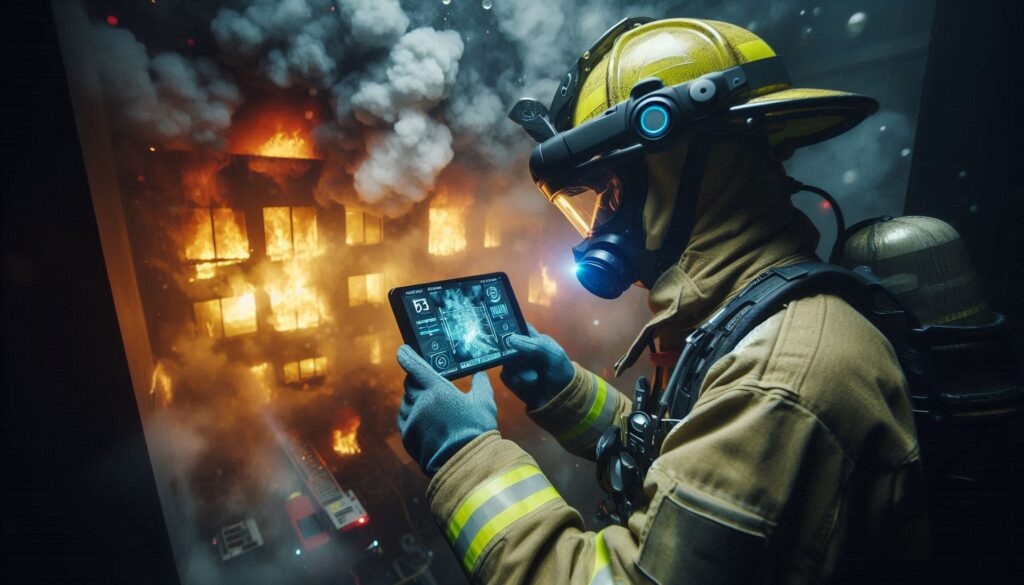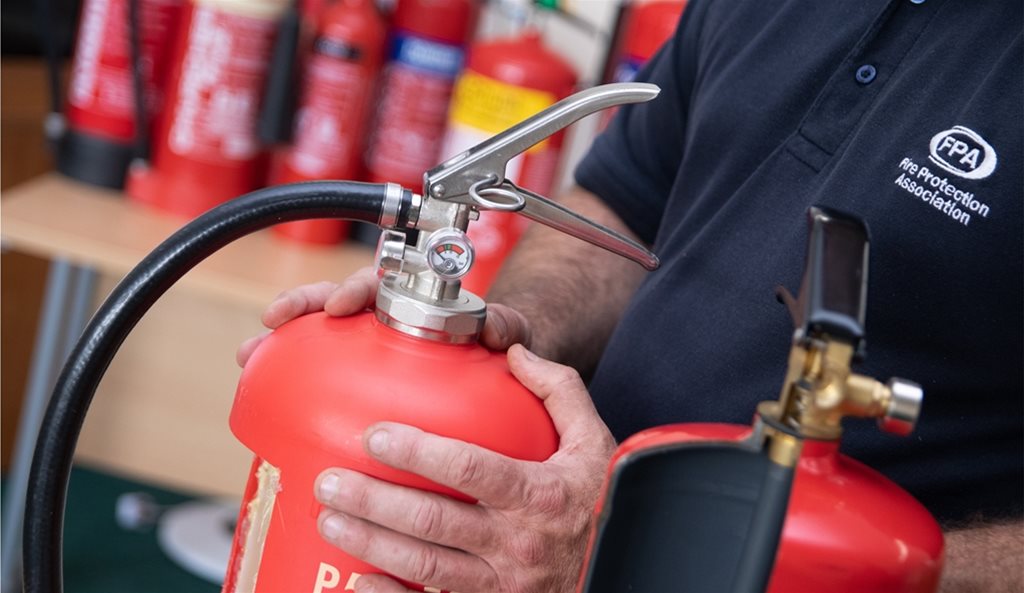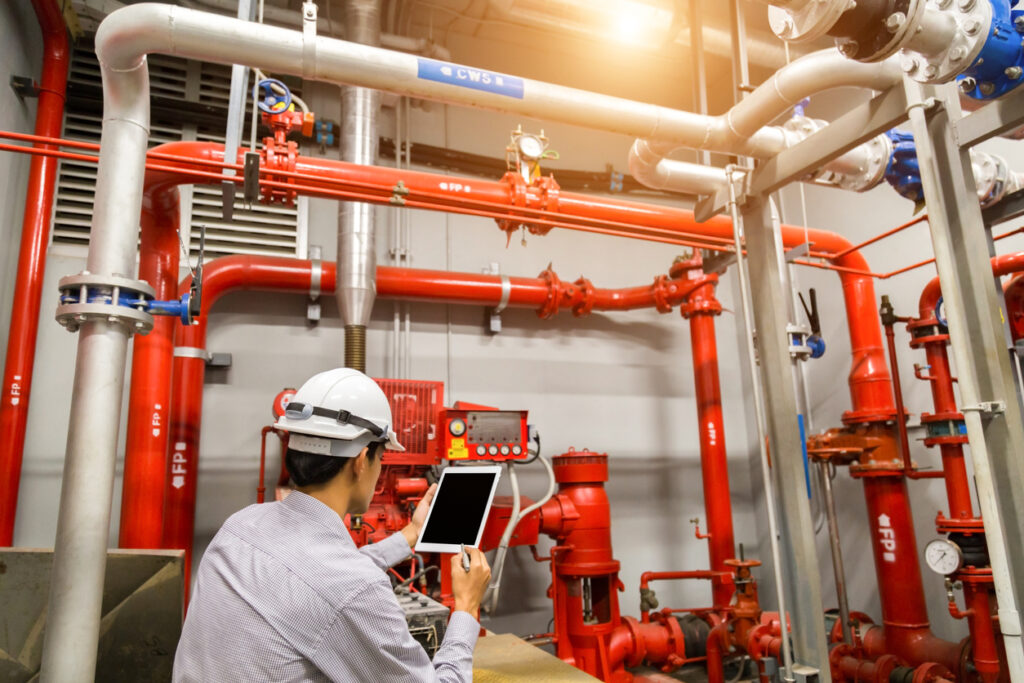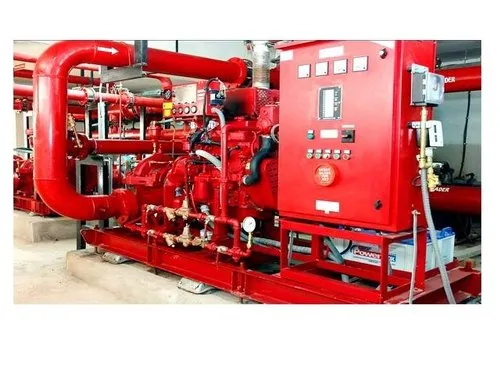Investigating how combining deep learning algorithms with AR technology can enhance firefighters’ ability to assess and respond to dynamic fire scenarios.
Firefighting is among the most hazardous professions in the world, requiring split-second decision-making and precise actions in the face of unpredictable and life-threatening conditions. Firefighters often operate in environments with poor visibility, heat, smoke, and chaos, making situational awareness a critical factor in their safety and effectiveness. Traditional tools such as radios, thermal cameras, and maps, while helpful, often fall short in providing firefighters with comprehensive, real-time information about their surroundings.
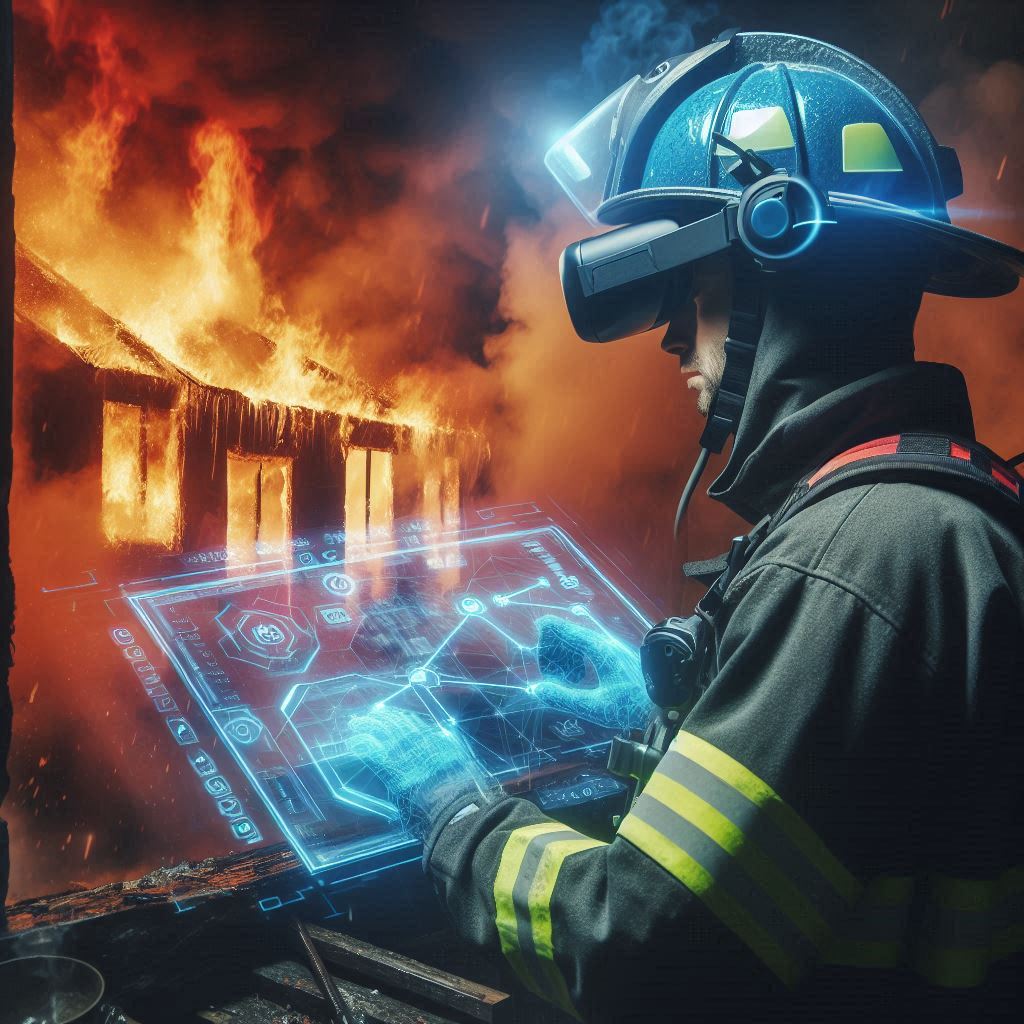
Enter the integration of deep learning and augmented reality (AR)—a groundbreaking technological leap that promises to transform firefighting operations. By combining the computational power of deep learning algorithms with the immersive capabilities of AR, firefighters can gain enhanced situational awareness, enabling them to assess and respond more effectively to dynamic fire scenarios.
In this blog post, we’ll explore how deep learning and AR work together, their applications in firefighting, and the challenges and opportunities associated with implementing these technologies in the field.
The Challenges of Situational Awareness in Firefighting
Situational awareness refers to a firefighter’s ability to perceive, understand, and predict the status of their environment during a fire or emergency scenario. Maintaining situational awareness is critical for making informed decisions, ensuring the safety of the team, and achieving mission objectives. However, several factors make this particularly difficult in firefighting:
Poor Visibility: Smoke and darkness often obscure vision, making it difficult to navigate and locate victims or hazards.
Dynamic Environments: Fires can spread unpredictably, with changing heat levels, collapsing structures, and shifting wind patterns.
Information Overload: Firefighters must process multiple streams of information, including radio communications, maps, and thermal imaging, which can be overwhelming in high-stress situations.
Time Sensitivity: Firefighters must make crucial decisions in seconds, with limited access to real-time data.
These challenges underscore the need for advanced tools that can provide firefighters with real-time, intuitive, and actionable information about their surroundings.
Deep Learning and Augmented Reality: A Powerful Combination
The integration of deep learning and augmented reality offers a powerful solution to the challenges of situational awareness in firefighting. Let’s take a closer look at how these technologies work and how they complement each other.
- Deep Learning: Processing Data in Real Time
Deep learning is a subset of artificial intelligence (AI) that uses neural networks to process and analyze large amounts of data. Deep learning algorithms excel at recognizing patterns, classifying objects, and making predictions, making them ideal for firefighting applications. Key capabilities include:
Object Detection: Deep learning can identify objects such as doors, windows, fire extinguishers, and victims in real time, even in low-visibility conditions.
Thermal Analysis: By analyzing data from thermal cameras, deep learning can detect hotspots, assess fire intensity, and predict fire spread.
Speech and Text Recognition: Deep learning can transcribe radio communications or overlay key information, such as floor plans or escape routes, onto a firefighter’s field of view.
Predictive Modeling: Algorithms can analyze fire behavior and provide firefighters with predictions about how the fire might evolve, helping them make proactive decisions.
- Augmented Reality: Visualizing Information in Context
Augmented reality is a technology that overlays digital information onto the physical environment, typically through devices such as AR glasses or headsets. In firefighting, AR can display critical data directly in a firefighter’s line of sight, reducing the need to rely on handheld devices or paper maps. Key features include:
Heads-Up Displays (HUDs): AR can project information such as temperature readings, fire location, and escape routes onto a firefighter’s visor or AR glasses.
Spatial Mapping: AR can create 3D maps of a building’s interior, highlighting hazards, safe zones, or areas where victims may be located.
Navigation Assistance: Firefighters can receive turn-by-turn navigation to reach specific locations within a building, even in smoky or poorly lit conditions.
Interactive Training: AR can simulate fire scenarios for training purposes, helping firefighters practice decision-making and response strategies in a controlled environment.
- The Synergy Between Deep Learning and AR
When combined, deep learning and AR create a seamless, data-driven system that enhances situational awareness. Deep learning provides the computational power to analyze data in real time, while AR presents this information in an intuitive and context-aware format. For example:
A deep learning algorithm detects a victim using thermal imaging, and AR highlights the victim’s location on the firefighter’s HUD.
Deep learning predicts the structural integrity of a burning building, and AR displays warnings about areas at risk of collapse.
A real-time map generated by deep learning is overlaid onto a firefighter’s AR glasses, showing the safest path to an exit or the location of a fire hotspot.
Applications of Deep Learning and AR in Firefighting
The combination of deep learning and AR has numerous applications in firefighting, from pre-incident planning to real-time operations and post-incident analysis.
- Real-Time Navigation and Mapping
One of the most valuable applications of deep learning and AR is real-time navigation in complex and hazardous environments. Firefighters can use AR glasses to see 3D maps of a building’s interior, complete with labeled exits, staircases, and hazards. Deep learning algorithms continuously update these maps based on sensor data, ensuring that firefighters always have accurate and up-to-date information. - Victim Detection and Rescue
Locating victims in a fire is a top priority, but it can be incredibly challenging in smoke-filled environments. Deep learning algorithms can analyze thermal camera data to detect body heat and identify victims, even when visibility is near zero. AR systems can then highlight the victim’s location on the firefighter’s HUD, guiding them directly to the person in need. - Fire Behavior Prediction
Fires are dynamic and unpredictable, but deep learning algorithms can analyze factors such as temperature, wind speed, and fuel sources to predict how a fire will spread. AR can display these predictions visually, showing firefighters where the fire is likely to move and helping them make proactive decisions to contain it. - Hazard Identification
Deep learning can identify potential hazards, such as gas leaks, structural weaknesses, or flammable materials, in real time. AR can highlight these hazards in the firefighter’s field of view, reducing the risk of accidents and improving safety. - Training and Simulation
AR and deep learning can also be used to create realistic training simulations for firefighters. These simulations can replicate various fire scenarios, allowing firefighters to practice their response strategies and decision-making skills in a safe, controlled environment.
Benefits of Deep Learning and AR in Firefighting
The adoption of deep learning and AR in firefighting offers numerous benefits:
- Improved Situational Awareness
By providing real-time, context-aware information, these technologies enable firefighters to make more informed decisions and respond more effectively to dynamic scenarios. - Enhanced Safety
Deep learning and AR reduce the risks faced by firefighters by highlighting hazards, predicting fire behavior, and guiding them to safe zones or exits. - Increased Efficiency
With access to real-time data and navigation assistance, firefighters can locate victims, suppress fires, and complete their missions more quickly and efficiently. - Better Training
AR-based training simulations prepare firefighters for real-world scenarios, improving their readiness and confidence in the field. - Resource Optimization
By predicting fire behavior and identifying critical areas, these technologies help fire departments allocate resources more effectively, reducing costs and improving outcomes.
Challenges and Considerations
Despite their potential, the implementation of deep learning and AR in firefighting faces several challenges:
- Cost
AR devices and deep learning systems can be expensive, making them inaccessible to smaller fire departments with limited budgets. - Complexity
Integrating these technologies into firefighting operations requires extensive training and technical expertise, which may be a barrier for some departments. - Reliability
In high-stakes situations, firefighters need technology they can rely on. Ensuring that AR and deep learning systems work consistently, even in harsh conditions, is critical. - Data Privacy and Security
The collection and analysis of real-time data raise concerns about privacy and security, particularly if sensitive information is stored or transmitted.
The Future of Deep Learning and AR in Firefighting
As technology continues to evolve, the potential of deep learning and AR in firefighting will only grow. Future advancements may include:
Improved AR Devices: Lightweight, durable AR glasses with longer battery life and enhanced field-of-view capabilities.
More Accurate Algorithms: Deep learning models that can analyze data more quickly and accurately, even in extreme conditions.
Integration with Robotics: Combining AR and deep learning with firefighting drones or ground robots for even greater situational awareness.
Wider Adoption: As costs decrease and technology becomes more accessible, more fire departments will adopt these tools.
Conclusion
The combination of deep learning and augmented reality is poised to revolutionize firefighting by enhancing situational awareness and enabling more effective responses to dynamic fire scenarios. By providing real-time, actionable information in an intuitive format, these technologies empower firefighters to navigate hazardous environments, locate victims, and suppress fires with greater precision and confidence.
While challenges remain, the ongoing development of deep learning and AR promises a safer, more efficient future for firefighting. As fire departments embrace these innovations, they will not only protect lives and property more effectively but also pave the way for a new era of technology-driven emergency response.

